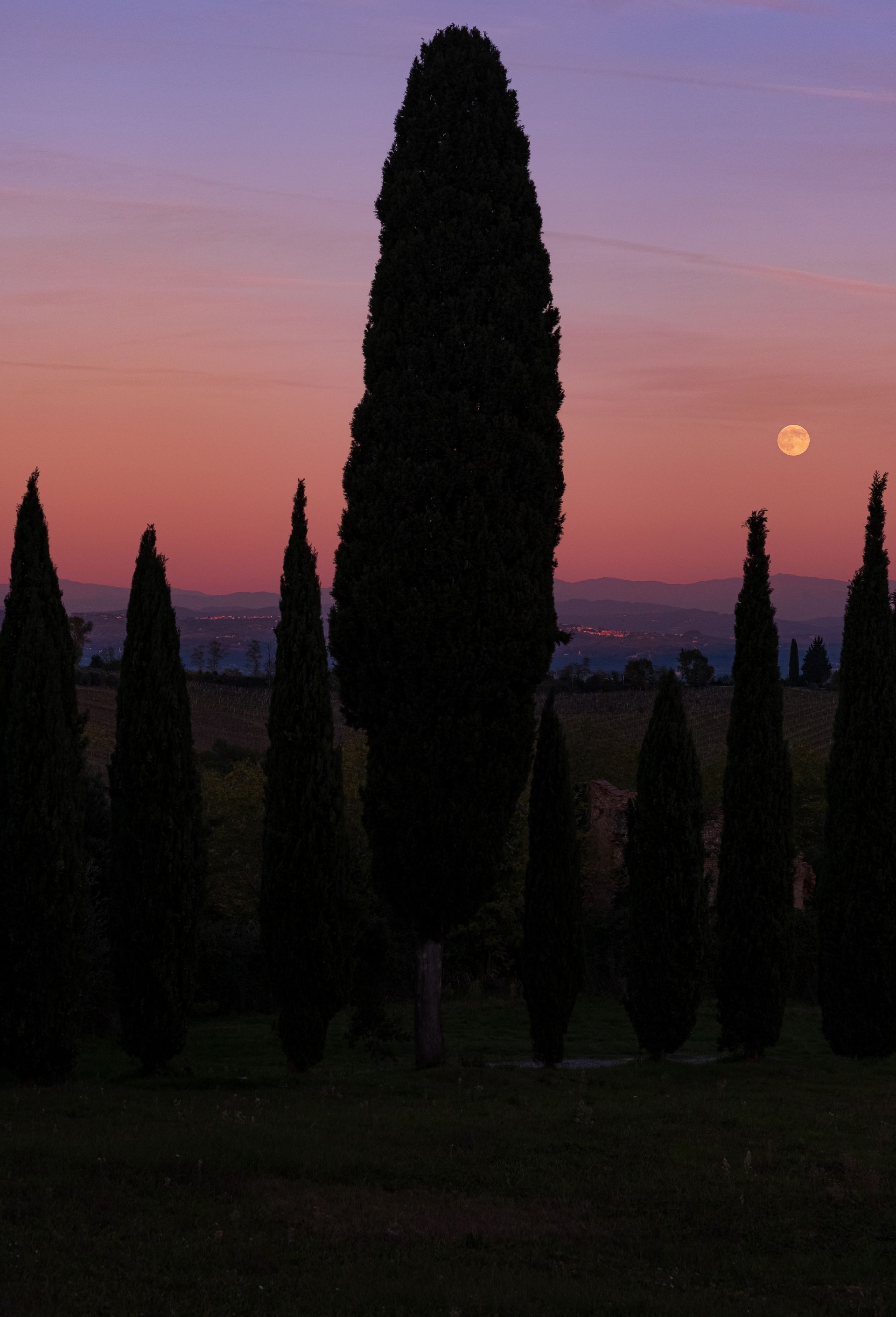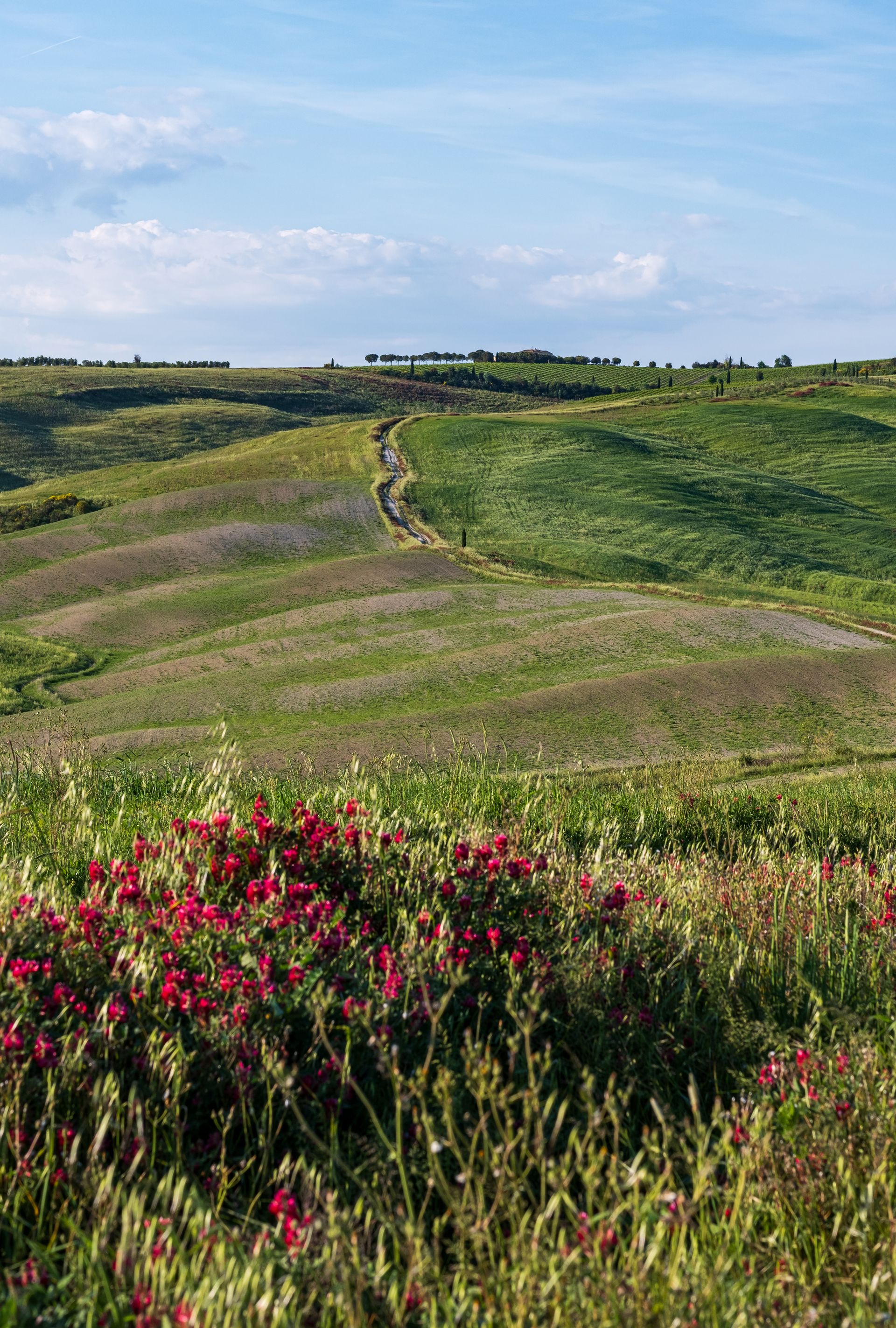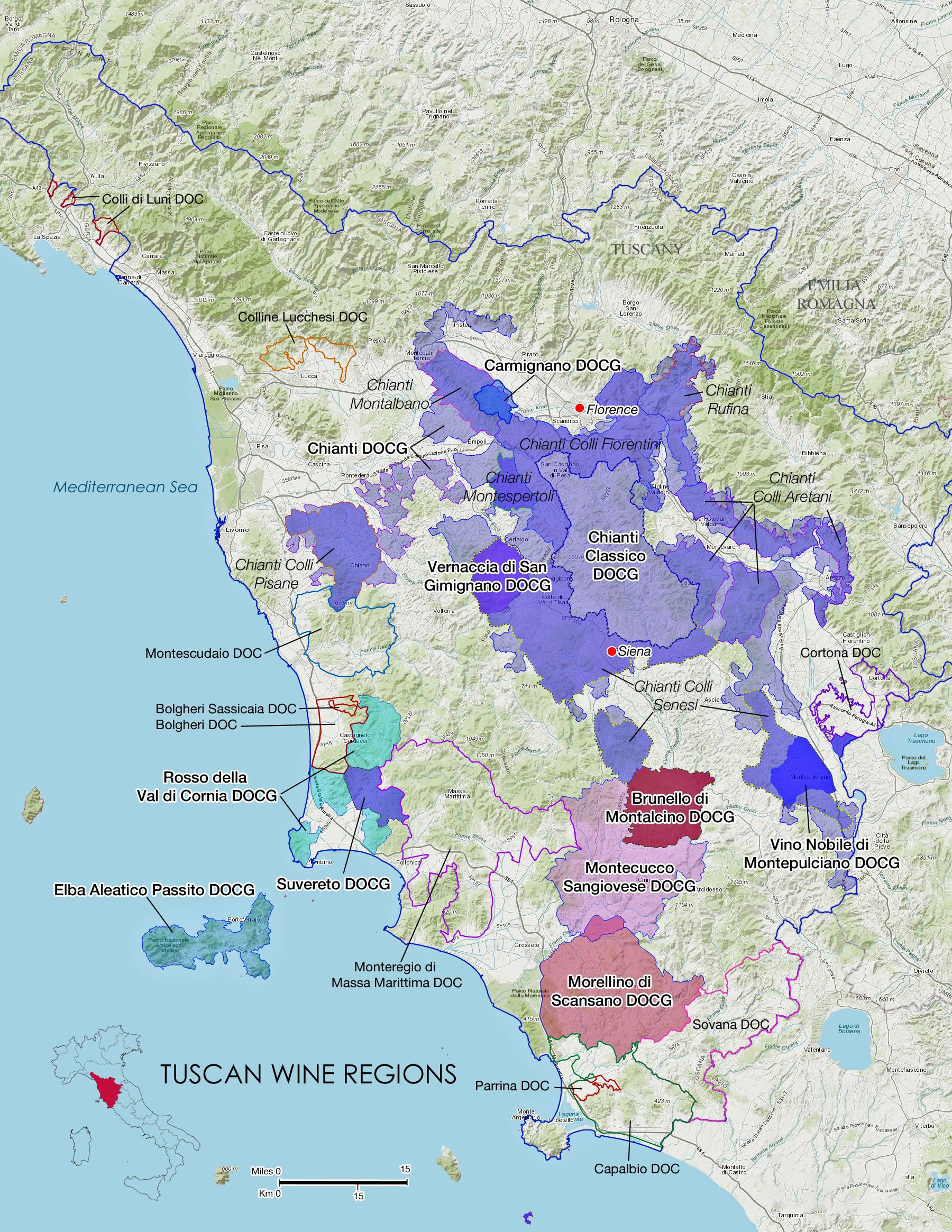- Grapestained
- Posts
- The Grapestained Guide to Tuscany
The Grapestained Guide to Tuscany
Where to go, what to eat, and which wines to spill on your shirt. A fully immersive journey into one of Italy’s most beloved regions.
Tuscany isn’t just a region. It’s a feeling. A dream that just so happens to be real. A sun-drenched swirl of vineyards and villages, bowls of hand-rolled pici, and conversations that last longer than the bottle on the table.
Here, straight lines are a myth. The roads wander like they’ve been sipping wine since breakfast, twisting through forests, farmland, and fields of wildflowers, past cypress trees that stand in circles gossiping, until they stumble in hilltop towns where Renaissance frescoes hide in churches older than the United States. The landscape alone feels like it was painted by someone who really knew how to drink a glass of wine slowly, enjoying every last sip.

It’s no wonder this region has become one of the most romantic destinations in the world, not just for lovers, but for anyone in love with food, culture, beauty, and a slower way of living. Tuscany doesn’t rush. It doesn’t shout. It welcomes you with a wink, a plate of something simple, and a bottle of Sangiovese that tastes like cherries, earth, and the whispered secrets of somebody’s nonna.
👉 Want to see it for yourself? Browse the full Tuscany photo gallery here →

🗺️ The Lay of the Land
Tuscany is not a place you just visit, it’s a landscape you feel. A region of folds and curves, of misty mornings and golden afternoons, of ancient towns and ever-winding roads that seem designed to make you slow down and breathe it all in.
This is where olive groves flirt with cypress trees, stone towers keep watch over weathered rooftops, and vines stretch over the hills like they’ve got nowhere else to be. It’s romantic, yes, but also one of the most dynamic food & wine-producing regions on Earth.
Explore Tuscany’s Vineyards → Visit Tuscany with us!!!
 |  |
🌍 Geography & Climate
Tuscany stretches nearly 9,000 square miles from the breezy Tyrrhenian Sea in the west to Italy’s spine, the Apennines. In the east, it’s layered with hills, valleys, and mountain slopes that form a complex patchwork of terroirs. Roughly 70% of the region is made up of rolling hills, making for excellent vineyard drainage, varied elevations, and that golden trifecta of sun, wind, and temperature shift.
This is a true Mediterranean climate: hot, dry summers balanced by cooling coastal breezes and nighttime dips in temperature. These diurnal shifts are essential as they help grapes preserve their acidity, structure, and vibrancy even under the Tuscan sun.
But what makes Tuscany truly special is its endless microclimates. Around every corner, the soil changes, the altitude shifts, and the grape expresses something new.

Here is a good look at both the scale and diversity of Tuscany, side by side with it’s wine producing regions.

⛰️ Soils of Story and Stone
Once upon a time, Tuscany was beneath the sea. And because of that ancient past, its soils are a complex, beautiful mess; clay, marl, limestone, marine fossils, volcanic ash, and everything in between.
Chianti Classico is defined by Galestro, a crumbly marl that drains beautifully and gives Sangiovese its trademark elegance.
San Gimignano leans on sandy limestone and old sea fossils, perfect for crisp white wines like Vernaccia.
Bolgheri and Maremma, closer to the sea, feature gravelly clays, large stones and sandy soils; ideal for bold Super Tuscan reds.
Monte Amiata, a sleeping volcano near Montalcino and Montepulciano, brings whispers of volcanic soils that sneak complexity into the wines of the south.
Each soil type, each elevation, each wind current has its own fingerprint and the producers of Tuscany know exactly how to read them.

📍 The Sangiovese Belt & Beyond
While vines grow nearly everywhere in Tuscany, the highest-quality zones lie in a magical midsection known as the Sangiovese Belt; stretching from Florence through Chianti Classico, down to Siena, Montepulciano, and Montalcino, and then west to the coast near Bolgheri.
These aren’t just towns, they’re chapters in the story of Italian wine.
🍷 Many of our upcoming producer spotlights are rooted in this very soil. From the slopes of Montalcino to the limestone hills of San Gimignano. As this newsletter unfolds, we’ll guide you deeper into the flavors, families, and fermentations that make Tuscany one of the most magical wine regions in the world.

Why We Love It
Tuscany is a feeling you can taste. It’s olive oil so green it glows, a pasta sauce that’s been simmering since sunrise, and wine that tells you its whole life story in one sip. It’s the cypress tree-lined roads that guide you home, the slow hum of life where nobody’s rushing (except maybe a nonna with a wooden spoon), and a golden hour that lasts just a little longer here. It’s long tables and louder laughter, sun-warmed stone walls, and strangers who treat you like family before you’ve even sat down. It’s not just about where you are; it’s about how you feel when you’re here. And somehow, Tuscany always feels like exactly where you’re meant to be.
From Tuscany with love ❤️ (and probably a little Sangiovese 🍷 and Pomodoro 🍅 on your shirt)
– Ryan
🍷 Next Up
🌿 Part #2 – When to Go & Where to Visit
Explore Tuscany’s seasons 🍂🌸☀️ and discover the best times to visit each enchanting town and vineyard 🍇.
🍝 Part #3 – What to Eat, What to Drink, & The Grapes That Built Tuscany
Delve into iconic Tuscan dishes 🍖🧀🍞, perfect wine pairings 🍷, and the grapes behind Tuscany’s magic. Learn about Tuscany’s boldest flavors and the legendary grapes behind them 🍷🍇.
Not a Scarpetta Club member yet? 😱
Don’t miss out. Upgrade now and unlock:
📖 Insider stories
🍳 Traditional recipes
🎉 Exclusive events
🏰 Full access to our Tuscany series… and more!
🍾 Upgrade today and step into the heart of Tuscany with us.
👉 Upgrade Your Membership →



Reply